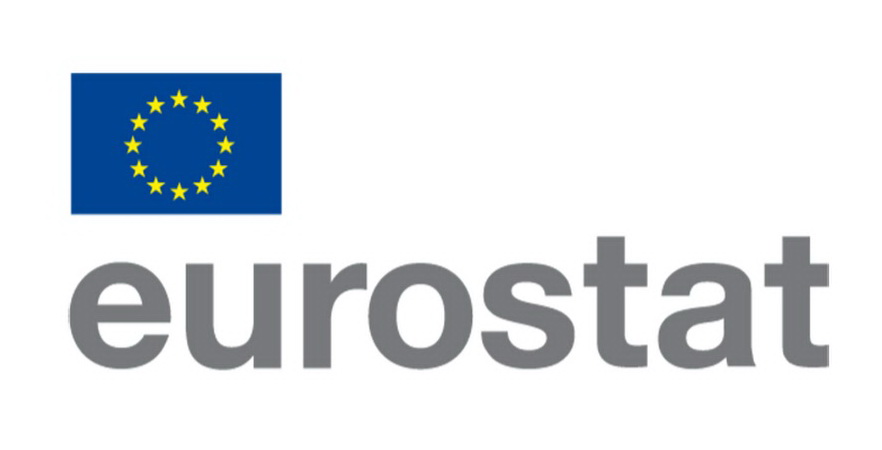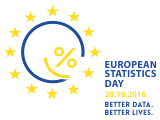| Category: | Economic statistics |
| Area: | Energy |
| Survey / data collection: | Annual balance of electricity |
| MONSTAT metadata |
|---|
| Reference metadata |
| 1. Contact |
| 2. Metadata update |
| 3. Statistical presentation |
| 4. Unit of measure |
| 5. Reference period |
| 6. Institutional mandate |
| 7. Confidentiality |
| 8. Release policy |
| 9. Frequency of dissemination |
| 10. Accessibility and clarity |
| 11. Quality management |
| 12. Relevance |
| 13. Accuracy and reliability |
| 14. Timeliness and punctuality |
| 15. Coherence and Comparability |
| 17. Data revision |
| 18. Statistical processing |
| 19. Comment |
Note: For any question on metadata, please contact MONSTAT metadata support.
| 1. Contact Vrh | |
| 1.1. Contact organization: | Statistical Office of Montenegro - MONSTAT |
| 1.2. Contact organization unit: | Business Statistics, Foreign Affiliates Statistics and Structural Business Statistics Department |
| 1.2. Contact organization unit: | IV Proleterske 2, 81000 Podgorica, Montenegro |
| 2. Metadata update Top | |
| 2.1. Metadata last certified: | |
| 2.2. Metadata last posted: | 29 December 2023 |
| 2.3. Metadata last update: | 01/10/2020 |
| 3. Statistical presentation Top | |
| 3.1. Data description: | The aim of the survey is the compilation of balance of electricity. Balance of electricity provide the data on electricity production (gross production ? generators, own consumption, net production - power plants); electricity obtained from organizations for electricity transmission, delivered electricity to organizations for electricity transmission and to final users (total, energy sector, manufacturing, transport, households, agriculture and other sectors). |
| 3.2. Classification system: | NACE Rev. 2 |
| 3.3. Sector coverage: | The reporting units for calculation of balance of electricity are companies engaging in the production and distribution of electricity. Balance of electricity also covers the data from statistical surveys in the area of energy, foreign trade, industry, transport and agriculture. |
| 3.4. Statistical concepts and definitions: | Primary production is a form of energy that has not been converted or transformed (coal, oil, natural gas, biomass, firewood, hydro power energy, geothermal energy, wind energy and solar energy). Recovered products are rare and they are present to cover sources of fuels which are recovered from fuels already produced but not counted or saved. For example, waste coal may be later recovered for use. Imports and exports cover quantities that crossed the national border. Stock changes are the difference between stocks at the beginning of the year (initial stocks) and those at the end of the year (final stocks). Marine bunkers cover the quantities delivered for international navigation purposes. Statistical differences are a category that includes the sum of unknown statistical differences between the production and consumption of selected fuels. Gross inland energy consumption is calculated as follows: Primary production + Imports - Exports + Stock changes - Marine bunkers Transformation - input is the consumption of fuels as raw materials for energy production in thermal power plants, CHP, auto producers, district heating plants, refineries, blast furnace plants and coal transformation. Transformation - output covers the production of transformed energy forms (thermoelectricity, heat, petroleum products, blast furnace gas and oxygen steel furnace gas). Exchange and transfers include inter product transferred (distillates), products transferred (hydro energy) and recycled products (naphtha, fuel oil and lubricants). Own consumption in energy sector covers the energy used for energy sector running. Losses cover losses occurred: o for electricity: during transmission and distribution; o for solid fuels: during transport; o for liquid fuels: during transport and distribution; o for fire wood: during transport. Energy available for final consumption is the energy intended for final consumers. Final consumption for non-energy purposes covers final energy consumption as raw material for production of non-energy products in technological process, while consumption in chemical industry is separated from total consumption. Final consumption for energy purposes covers final consumption of available energy for energy purposes in: o industry (iron and steel, non-ferrous metal, chemical industry, non-metal minerals, mining and quarrying, food, drink and tobacco industry, textile, leather and clothing, paper and printing, engineering and other metal industry, other industries); o transport (rail, road, air, inland, other); o households, agriculture and other sectors (total households, included those with employees, agriculture and other consumers, e.g. education, health, administration, etc.). |
| 3.5. Statistical unit: | The reporting units for calculation of balance of electricity are companies engaging in the production and distribution of electricity. |
| 3.6. Statistical population: | The reporting units for calculation of balance of electricity are companies engaging in the production and distribution of electricity. |
| 3.7. Reference area: | Montenegro |
| 3.8. Time coverage: | Since 2005 |
| 3.9. Base period: | Calendar year |
| 4. Unit of measure Top | |
| GWh, TJ | |
| 5. Reference period Top | |
| Calendar year | |
| 6. Institutional mandate Top | |
| 6.1. Legal acts and other agreements: | The Law on Official Statistics and Official Statistical System (Official Gazette of Montenegro No 18/12 and 47/19) defines provisions for collection, processing, and dissemination of data. The Law provides to the Statistical Office legal powers to collect and access the data necessary for the implementation of Programme and Annual Plan. The Law gives a priority to the use of administrative data and right of access to individual data that are a result of survey of other official statistical producers. As an annex to legal provisions, Statistical Office has signed several memoranda on cooperation with administrative data providers. |
| 6.2. Data sharing: | Signed agreement on cooperation with the official statistical producers: 1. Customs Administration 2. Tax Administration 3. Ministry of Finance 4. Central Bank of Montenegro 5. Trilateral agreement (MONSTAT, Ministry of Finance, and Central Bank of Montenegro) International institutions: 1. EUROSTAT 2. UN organizations 3. IMF 4. World Bank |
| 7. Confidentiality Top | |
| 7.1. Confidentiality - policy: | Articles 53-60 of the Law on Official Statistics and Official Statistical System (Official Gazette of Montenegro No 18/12 and 47/19) provide a framework for protection, use, and transmission of confidential data. Statistical office has produced two comprehensive rulebooks that cover the procedures for individual data protection as well as keeping individual records. With purpose of the meeting legal framework on functioning of security system and statistical confidentiality there was adopted the Rulebook on Keeping Statistical Data by which Manner, Time, Technical Conditions and Organization of Statistical Data Storage to Prevent Their Destroying, Misappropriation, and Unauthorized Use is Regulated as well as the Rulebook on Contents and Manner of Keeping Records on Users of Individual Statistical Data by which contents and manner of keeping records on users of individual statistical data is regular. Pursuant to the Article 59, an access to the confidential data is limited to persons performing duties and tasks of official statistical producer and up to the stage the data are necessary for official statistical production. Persons that performs duties and tasks within official statistical producers must sign the statement on respecting the principle of confidentiality. Law on Official Statistics and Official Statistical System is aligned with the Regulation No 223/2009 and the Regulation (EU) 2015/759 from 29 April 2015 that also regulate confidentiality provisions. The Government of Montenegro adopted the Statement on Commitment of Confidence in Official Statistics (Commitment of Confidence). |
| 7.2. Confidentiality - data treatment: | Individual data are protected from any kind of abuse according to the Official Statistics and Official Statistical System, Official Gazette of Montenegro No 18/12 from 30.03.2012. |
| 8. Release policy Top | |
| 8.1. Release calendar: | The Law on Official Statistics and Official Statistical System (Official Gazette of Montenegro No 18/12) stipulates that official statistical producers prepare, update, and publish Statistical Release Calendar. It is published on the website of Statistical Office not later than 20 December for the next year, for all official statistical producers that includes date of releasing statistical data. Any change in date of releasing in the Calendar is published in advance in accordance with the Procedure on Unplanned Revisions. |
| 8.2. Release calendar - access: | http://www.monstat.org/eng/page.php?id=12&pageid=12 |
| 8.3. User access: | General aim of official statistical producer is to meet the needs of users, and to make an access to statistical data to users in an understandable manner, simultaneously and under the same conditions. Statistical Office is obliged to produce and disseminate official statistics in objective, transparent and professional manner, so that all users are equally treated. |
| 9. Frequency of dissemination Top | |
| Annual | |
| 10. Accessibility and clarity Top | |
| 10.1. News release: | Data are available on the website: http://monstat.org/eng/page.php?id=40&pageid=40 |
| 10.2. Publications: | Statistical Office publishes the following regular publications: 1. Statistical Yearbook, 2. Montenegro in figures, 3. Monthly statistical review. In addition to the above regular ones, Statistical Office publishes also additionally publications. Some of the most important additional publications are as it follows: 1. Women and Men in Montenegro, 2. The most often used statistical data All publication published by Statistical Office are available at the following link: http://monstat.org/eng/publikacije.php |
| 10.3. Online database: | http://monstat.org/eng/page.php?id=40&pageid=40 |
| 10.4. Micro-data access: | The Law on Official Statistics and Official Statistical System (Official Gazette of Montenegro No 18/12) regulates rules under which external users can obtain an access to individual data for needs of research. Article 58 defines types of scientific and research organizations that can obtain such data. Providing individual data without identifier is possible only upon a written request of scientific and research institutions, with purpose of performing scientific and research activities as well as international statistical organizations and statistical producers from other countries. Research entity signs the agreement with Statistical Office, and it signs the statement on respecting the confidentiality principle. Official statistical producers keeps a separate records on users and purpose of using the statistical data given to these users. |
| 10.5. Other: | Data are sent to Eurostat |
| 10.6. Documentation on methodology: domain: | http://monstat.org/userfiles/file/ENERGETIKA/bilans%20el_energije/Methodology_Balance%20of%20electricity_ENG.pdf |
| 10.7. Quality documentation: | The Law on Official Statistics and the Official Statistical System ("Official Gazette of Montenegro" No. 18/12 and 47/19) defines the commitment to quality, which ensures that producers of official statistics in Montenegro work and cooperate in accordance with international principles of quality of the statistical system. In accordance with the ESS Quality Declaration, Article 338 of the Treaty on the Functioning of the EU, Regulations 759/2015 and 223/2009 and the European Statistics Code of Practice, the following documents are adopted: 1. Quality Strategy of the Statistical Office 2. Guide for the implementation of the Quality Strategy in the Statistical Office; 3. Implementation plan |
| 11. Quality management Top | |
| 11.1. Quality assurance: | Statistical Office has chosen the implementation of elements of TQM (Total Quality Management) model that foster development and improvement of functioning of: - Institution, - Official statistical result production, and - Individual. Within middle-term deadline, Statistical Office has chosen the TQM implementation through the following objectives: 1. Strong commitment to users and other interested parties, 2. Quality statistical processes and products, 3. Professional orientation of staff members, 4. Constant improvements, 5. Reduction of overburden of reporting units. |
| 11.2. Quality assesment: | The quality is monitored at all stages of data production, by the responsible statisticians, in accordance with the specification for the specific research. Data collection, input and processing is usually the subject of this monitoring. |
| 12. Relevance Top | |
| 12.1. User needs: | International users: - Eurostat, - World Bank, - UN organizations, - International Monetary Fund National users: - Ministries and other public administration bodies, -Local government, and -Other local government bodies. - Central bank, - Non-governmental organizations, - Students, -Researchers, - Media. |
| 12.2. User satisfaction: | The Statistical Office has adopted the Quality Management Strategy, the Guidebook to the Implementation of the Quality Management Strategy, as well as the Plan for the Implementation of the Quality Policy. In order to measure the degree to which fulfills obligations towards users and within the new quality policy, the Statistical Office conducted User satisfaction survey. The results of the survey are available on the Statistical Office website, link: http://monstat.org/uploads/files/2.%20Izvjestaj%20o%20zadovoljstvu%20korisnika%20ENG%20(Autosaved).pdf |
| 12.3. Completeness: | The annual energy balance of electricity complies with the recommendations of EUROSTAT and International Energy Agency (Regulative EC 1099/2008) and with Classification of activities NACE Rev.2. |
| 13. Accuracy and reliability Top | |
| 13.1. Overall accuracy: | Not relevant. |
| 13.2. Sampling error: | Not relevant. |
| 13.3. Non-sampling error: | Not relevant. |
| 14. Timeliness and punctuality Top | |
| 14.1. Timeliness: | Data are published 11 month after the end of reference period. |
| 14.2. Punctuality: | Deadlines for publishing have been complied in accordance with the calendar of release. |
| 15. Coherence and Comparability Top | |
| 15.1. Comparability - geographical: | Not relevant |
| 15.2. Comparability over time: | Not relevant |
| 15.3. Coherence - cross domain: | Contents, coverage, classifications and other rules in relation with conducting the energy statistics survey are defined with the main Regulation 1099/2008 and Eurostat and IEA Energy Statistics Manual. |
| 15.4. Coherence - internal: | Data is internally coherent. |
| 17. Data revision Top | |
| 17.1. Data revision - policy: | Statistical Office has adopted the revision policy and it is available on the website http://www.monstat.org/eng/page.php?id=1411&pageid=1411 |
| 17.2. Data revision - practice: | Significant revisions have only been made to reflect changes in methodology, |
| 18. Statistical processing Top | |
| 18.1. Source data: | The reporting units for calculation of balance of electricity are companies engaging in the production and distribution of electricity. Balance of electricity also covers the data from statistical surveys in the area of energy, foreign trade, industry, transport, and agriculture. |
| 18.2. Frequency of data collection: | Annual |
| 18.3. Data collection: | Data are collected on annual base by compilation method. |
| 18.6. Adjustment: | Not relevant |
| 19. Comment Top | |







